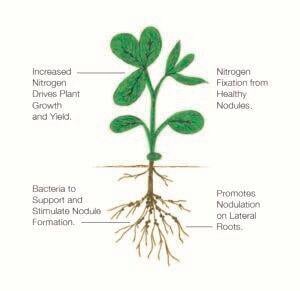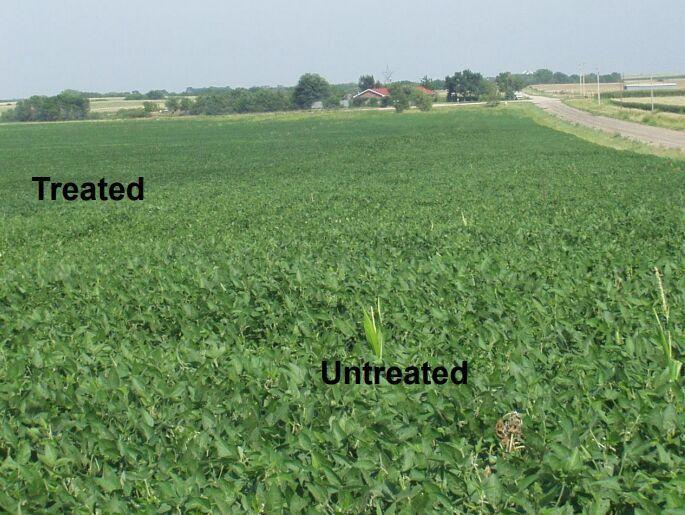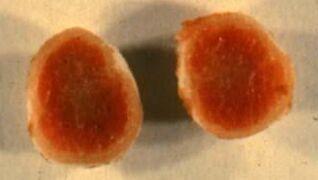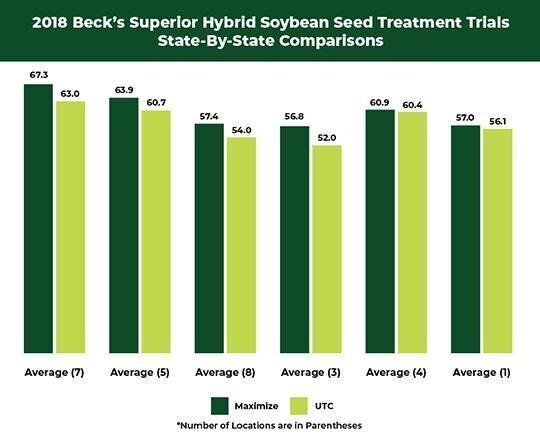Nature’s processes, perfected by science
Not just any microbe will get the job done, though.
If you are familiar with TerraMax products, you know that their researchers determine the best strains of the most effective microbes to accomplish the task — and that varies depending on what you’re growing.

The relationship between root nodules, nitrogen and plant health
Graphic provided by TerraMax
If you produce corn, you’ll want to check out TerraMax’s tried-and-true, Beck’s PFR Proven line of Azospirillum-based inoculants for corn. TerraMax uses Azospirillum for their inoculants for corn because it’s proven to fix nitrogen and to improve the root structure of corn plants and thus increase the grower’s ROI.
While most growers are comfortable talking about inoculants for beans, using a N-fixing inoculant for corn is a relatively new practice. TerraMax first began testing the “corn inoculant” in 2004 and now has 18 years of field trial experience and results that document a 6-8 bushel increase in yield over these years.
How about soybean?
Yes, inoculants have been used with beans for decades however, in the U.S., only about 15% of soybean farmers inoculate their crops. Their hesitancy may come from a traditional dearth of quality soybean inoculants on the market. According to a 1995 study by J. Brockwell and P. Bottomley, “most of the inoculant produced in the world [then was] of relatively poor quality,” with “90% of all inoculating [having] no practical effect.”
Soybeans are America’s leading legume and the number two crop behind corn. Soybean farmers across America will appreciate the prospect of healthier plants and healthier soils.
TerraMax microbial inoculants for soy: A success story
The scientists at TerraMax saw the lack of quality soybean inoculants on the market as an opportunity and have since developed a practical and effective microbial inoculant that improves soybean yield and soil health, and it’s easy for farmers to apply.
Their specific line of products contains two strains of Bradyrhizobium. Why? Just like how TerraMax scientists determined through years of research that Azospirillum was the most effective microbe to include in their corn inoculants, they dedicated years of study and invested in third-party testing to ensure that they would exact the same precision and quality from their soybean inoculants.
The proof is in the nodules
During testing, TerraMax researchers needed to determine which microbes would effectively fix nitrogen for soybean plants, compete with other microbes that live naturally in the soil, be able to survive in the soil over growing season, and be replicable and stable enough to produce and package for market use.

Treated soybean plants at the test center in Geneva, Nebraska, are a healthy, deep green color.
Photo provided by TerraMax
You can tell if a soybean plant is fixing nitrogen well if the plant is growing healthily and has a deep green color. And if you’re willing to get your hands dirty (as most farmers are), you can look at the roots of your soybean plants. The nodules, where nitrogen fixation occurs, should be large, pink or red in color if you cut into them, and you should see them at the crown, and with TerraMax formulations, more along the main lateral rods as well.

This bisected root nodule is red in the middle, indicating ample nitrogen fixation.
Photo rovided by TerraMax
TerraMax’s soybean inoculants don’t need additives to survive. They are available in dry or liquid formulations, and can be used based on individual farming practices.
A third party put TerraMax soybean inoculant products to the test at test fields in Minnesota, Iowa and multiple sites across Nebraska. For each site across the board, using TerraMax soybean inoculants increased the bushels per acre.

Chart showing higher bushels per acre for each site using TerraMax Maximize™ Soybean Inoculant
Graphic provided by TerraMax
So rejoice, soybean farmers. There are effective, affordable, easy-to-use products for you that will increase your ROI, make your soils healthier and make you better stewards of the land. TerraMax soybean inoculants have you covered.
